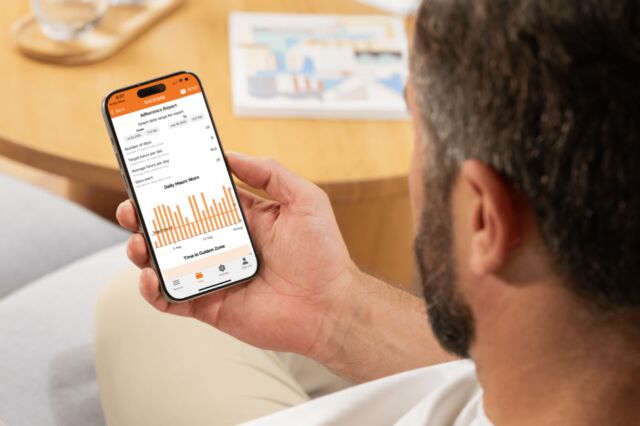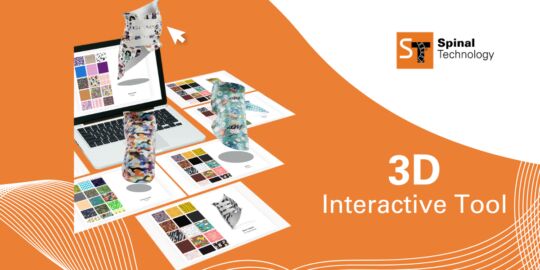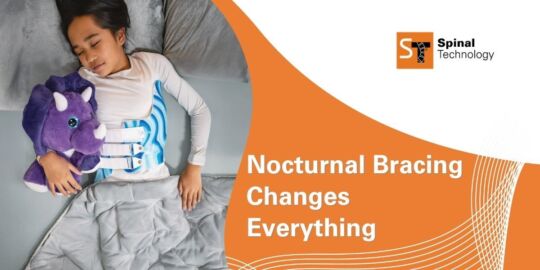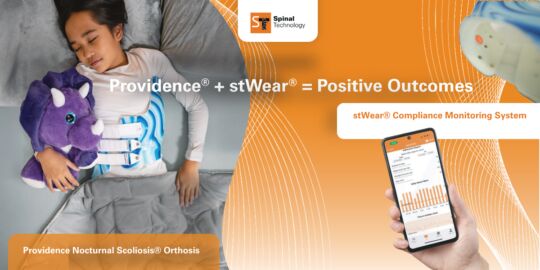Are You Tired of Inadequate Patient Compliance?
If you work with patients with curved spines who need to wear scoliosis braces, you've probably encountered the same issue multiple times—low compliance. After following every step—assessments, fittings and follow-ups—the patient isn’t wearing the brace as prescribed. And when that happens, the outcome is compromised.
We get it. Compliance isn’t just a patient problem; it’s a daily frustration for practitioners too, especially when you know that consistent wear time is essential. Whether it’s a spine brace for scoliosis or another orthotic device, the best results only happen when the patient sticks with the plan.
This blog highlights why patients struggle with brace wear, what makes compliance so challenging, especially for children and teenagers, and how practitioners can make a difference. At the end of the day, we all want the same thing: better outcomes for every patient.

Give Patients the Tools to Succeed
Sometimes compliance is just a matter of not realizing the time that has passed. Many practitioners hear the surprise when patients find out that really they weren't wearing the brace for 18 hours. With the stWear® Compliance Monitoring System, parents and practitioners can see the data in real-time on the stWear® app. The data is available to download any time, removing the guesswork and the time between appointments to find out that the brace wearing time isn't within the prescribed amount. Or maybe it is, and the child can be rewarded for their success with something that will motivate them further to be compliant.
When Having the Best Back Brace for Scoliosis Isn’t Enough
You can prescribe the most advanced scoliosis spinal brace, invest time in a perfect fit, and carefully walk a patient through every step while still watching compliance slip away. It’s not always about the brace itself. Often, it’s about how a patient feels in it.
For many, wearing a back brace for scoliosis is a daily emotional and social challenge. Especially for younger patients, a brace for a curved spine can come with feelings of embarrassment, discomfort, or isolation. And for practitioners, this can be incredibly frustrating. You want to help. You want to see progress. But you’re also up against something that clinical expertise can’t fix.
That’s where understanding and empathy come in. When we take time to acknowledge what patients are facing, not just physically but emotionally, we open the door to better results. You have the power to make a difference by being a steady, informed guide through this challenging process and by offering quality scoliosis braces.
Why Patients Resist Wearing a Spine Brace for Scoliosis
Even with the best intentions and education, many patients hesitate when it comes time to actually wear their spine brace for scoliosis. This isn’t because they don’t care or simply don’t want to wear it. It's because it’s hard. It’s a lot to manage physically, emotionally, and socially, especially for younger patients.
Physical Discomfort: Many teenagers with scoliosis report that braces cause discomfort, including back pain and pressure points. This physical discomfort can be a significant barrier to consistent wear.
Appearance and Social Stigma: The visual aspect of being braced for scoliosis can lead to feelings of self-consciousness. Young patients may fear standing out or being judged by peers, leading to reluctance to wear the scoliosis back brace.
Misunderstanding the Treatment: Some patients and their families may not fully grasp the importance of consistent brace wear, leading to non-compliance. This highlights the need for clear communication about treatment goals and expectations.
Recognizing these factors is the first step toward addressing them. Focusing on fostering open communication and understanding can help patients navigate these challenges and improve their experience and outcomes.

Supporting Teenagers: A Special Kind of Challenge
Teenagers face a unique kind of pressure regarding scoliosis. As a practitioner managing a treatment plan, you’re stepping into the emotional world of a teen and their family.
Adolescent idiopathic scoliosis is the most common form of scoliosis, and bracing is often mandatory. But compliance at this stage is complicated. Teenagers want to fit in, move freely, and wear what their friends are wearing. Wearing a scoliosis brace for teenagers can feel like it’s getting in the way of all that. That’s why empathy matters.
One small but powerful tip: Encourage scoliosis patients to connect with others going through the same ordeal. There are amazing communities where teens share stories, tips, and outfits that work with their braces. Seeing someone their age living a complete, stylish, and joyful life while wearing a brace can shift everything.
Parents are also part of this picture. They want to help but often feel helpless. Giving them tools, language, and understanding can strengthen the support system around the patient. With the right attitude, community, and a well-fitted brace designed from the right types of scoliosis braces, teens don’t have to feel limited. They can still be themselves and stay on track with their care.
Making Scoliosis Braces More Wearable and Acceptable
Improving compliance involves educating patients and giving them something they can and want to wear. That’s where thoughtful design plays a critical role. Involving your patient from the beginning helps them get excited for their new brace. We introduced the 3D Design Tool that is interactive and patients have fun seeing how a new pattern will look on their brace. When a brace looks more like a medical device rather than unique, it’s easy to see why patients push back.
At Spinal Technology, we focus on creating custom braces for kids, teens, and adults. Every scoliosis back brace we make is designed based on clinical input, imaging, and specific patient needs. This approach helps ensure a better fit, more comfort, and greater acceptance from the person who must wear it daily.


